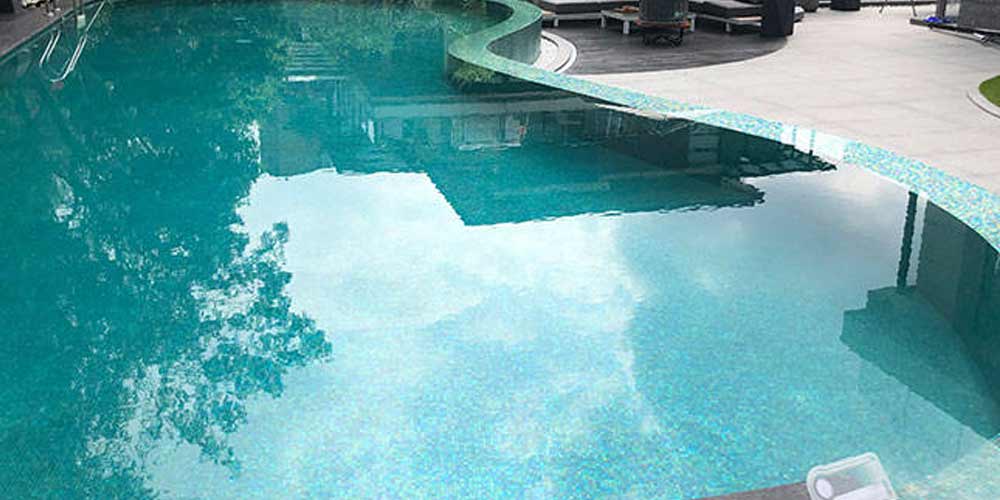Using algaecide to eliminate algae in swimming pools is a common and effective method to maintain a clear and healthy pool environment. Algaecides are chemical treatments designed to control and prevent the growth of algae in pools. Here’s a detailed guide on how to use algaecide to remove algae in swimming pools:
Identify the Algae Type:
Before choosing an algaecide, identify the type of algae present in the pool. Common types include green algae, blue algae, yellow (mustard) algae, and black algae. Different algaecides may be more effective against specific types of algae.
Select the Right Algaecide:
Choose an algaecide that is appropriate for the type of algae in your pool. Some algaecides are broad-spectrum, targeting multiple types of algae, while others are formulated for specific algae strains. Read the product label to ensure compatibility with your pool and follow the manufacturer’s instructions.
Note: Green algae and blue algae can be easily removed using algaecide. However, if the occurrence of yellow algae and black algae is more troublesome, it is recommended to use shock treatment.
Check Water Chemistry:
Before applying algaecide, test the pool water for pH, chlorine, and alkalinity levels. The water chemistry should be balanced to ensure optimal effectiveness of the algaecide. Adjust the levels as needed to fall within the recommended ranges.
Measure and Dilute if Necessary:
Measure the appropriate amount of algaecide based on your pool size and the severity of the algae problem. Some algaecides are concentrated and may need to be diluted with water before application. Follow the manufacturer’s instructions regarding dilution ratios.
Apply Algaecide:
Pour the measured algaecide directly into the pool, distributing it evenly across the water surface. Use a pool brush or a pool broom to help disperse the algaecide and target specific areas, especially where algae growth is prominent.
Run the Pool Pump and Filter:
Turn on the pool pump and filter system to circulate the water. This helps distribute the algaecide throughout the pool and ensures that it comes into contact with the algae. Run the system continuously for at least 24 hours after applying the algaecide.
Wait and Monitor:
The waiting period may vary depending on the specific species of algae, the severity of the algae bloom and the product used. Follow the recommended waiting time specified on the product label.
Vacuum and Brush:
After the waiting period, use pool brush to scrub the pool walls, floor, and steps to help remove any algae attached to them. and uses flocculants to settle killed algae and debris in the water。
Turn on the pool’s filtration system to circulate the water and help remove the dead algae and debris. Monitor the filter pressure and backwash.
Retest Water Chemistry:
Recheck the pool water chemistry, especially the chlorine levels. Adjust as necessary to maintain the recommended balance. It’s crucial to ensure that the pool water remains properly sanitized to prevent future algae growth.
Preventive Maintenance:
To prevent algae from returning, maintain proper pool water chemistry, regularly clean the pool, and use algaecides periodically as a preventive measure. Follow a regular pool maintenance schedule to keep the water clear and inviting.
In summary, using algaecide to remove algae in swimming pools involves selecting the right product, applying it correctly, and following up with proper maintenance. Regular monitoring and preventive measures will help keep your pool algae-free and ready for a refreshing swim. Always adhere to safety guidelines and the manufacturer’s instructions when using pool chemicals.
Post time: Feb-29-2024


